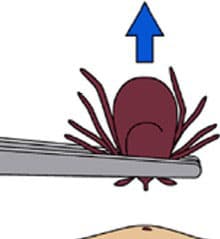Just had this sent me so thought I'd share
Shows other stuff's locations as well
Probably only the areas where feedbacks been given but....ooh wellECDC_Web_content
Tick species - Distribution maps
The map shows the current known distribution of the tick species in Europe at regional administrative level (NUTS3). They are based on published historical data and confirmed data provided by experts from the respective countries as part of the VBORNET project.
Separate maps for the distribution of each of the following tick species are currently available: Dermacentor reticulatus, Hyalomma marginatum, Ixodes persulcatus, and Ixodes ricinus.
To see a map of a particular tick species, please select the vector species in the menu below.
ECDC, through the VBORNET network, continues to improve the data collection for the maps: the VBORNET network is therefore looking for vector-borne disease experts who are interested in data sharing and networking (experts can contact VBORNET at vbornet@ecdc.europa.eu).
[h=1]Tick Removal[/h]If you find a tick attached to your skin, there's no need to panic. There are several tick removal devices on the market, but a plain set of fine-tipped tweezers will remove a tick quite effectively.
[h=2]How to remove a tick[/h]
 Avoid folklore remedies such as "painting" the tick with nail polish or petroleum jelly, or using heat to make the tick detach from the skin. Your goal is to remove the tick as quickly as possible--not waiting for it to detach.
Avoid folklore remedies such as "painting" the tick with nail polish or petroleum jelly, or using heat to make the tick detach from the skin. Your goal is to remove the tick as quickly as possible--not waiting for it to detach.


[h=2]Follow-up[/h]If you develop a rash or fever within several weeks of removing a tick, see your doctor. Be sure to tell the doctor about your recent tick bite, when the bite occurred, and where you most likely acquired the tick.
Shows other stuff's locations as well
Probably only the areas where feedbacks been given but....ooh wellECDC_Web_content
Tick species - Distribution maps
The map shows the current known distribution of the tick species in Europe at regional administrative level (NUTS3). They are based on published historical data and confirmed data provided by experts from the respective countries as part of the VBORNET project.
Separate maps for the distribution of each of the following tick species are currently available: Dermacentor reticulatus, Hyalomma marginatum, Ixodes persulcatus, and Ixodes ricinus.
To see a map of a particular tick species, please select the vector species in the menu below.
ECDC, through the VBORNET network, continues to improve the data collection for the maps: the VBORNET network is therefore looking for vector-borne disease experts who are interested in data sharing and networking (experts can contact VBORNET at vbornet@ecdc.europa.eu).
|
[h=1]Tick Removal[/h]If you find a tick attached to your skin, there's no need to panic. There are several tick removal devices on the market, but a plain set of fine-tipped tweezers will remove a tick quite effectively.
[h=2]How to remove a tick[/h]
- Use fine-tipped tweezers to grasp the tick as close to the skin's surface as possible.
- Pull upward with steady, even pressure. Don't twist or jerk the tick; this can cause the mouth-parts to break off and remain in the skin. If this happens, remove the mouth-parts with tweezers. If you are unable to remove the mouth easily with clean tweezers, leave it alone and let the skin heal.
- After removing the tick, thoroughly clean the bite area and your hands with rubbing alcohol, an iodine scrub, or soap and water.


[h=2]Follow-up[/h]If you develop a rash or fever within several weeks of removing a tick, see your doctor. Be sure to tell the doctor about your recent tick bite, when the bite occurred, and where you most likely acquired the tick.







